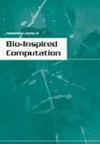基于Nystrom方法的SACOC算法在密集流形数据分析中的扩展
IF 2
3区 计算机科学
Q3 COMPUTER SCIENCE, ARTIFICIAL INTELLIGENCE
International Journal of Bio-Inspired Computation
Pub Date : 2017-08-23
DOI:10.1504/IJBIC.2017.085894
引用次数: 4
摘要
不断增长的数据量需要新的分析方法来提取相关知识。在这种情况下,聚类是最具竞争力的技术之一。聚类技术以数据集为起点,盲目地根据相似性对数据进行分组。在不同的领域中,多方面的识别目前越来越重要。基于光谱的方法对度量参数和噪声敏感,是目前常用的方法之一。为了解决这些问题,新的生物启发技术已经与不同的启发式方法相结合来执行聚类选择,特别是对于密集数据集,以高密度区域为特征。本文扩展了基于光谱的蚁群优化聚类(SACOC)算法,用于流形识别。我们专注于通过Nystrom扩展来改进它,以处理密集数据问题。我们评估了称为SACON的新方法,并将其与在线聚类算法和光谱聚类的Nystrom扩展进行了比较。本文章由计算机程序翻译,如有差异,请以英文原文为准。
Extending the SACOC algorithm through the Nystrom method for Dense Manifold Data Analysis
The growing amount of data demands new analytical methodologies to extract relevant knowledge. Clustering is one of the most competitive techniques in this context. Using a dataset as a starting point, clustering techniques blindly group the data by similarity. Among the different areas, manifold identification is currently gaining importance. Spectral-based methods, which are one of the main used methodologies, are sensitive to metric parameters and noise. In order to solve these problems, new bio-inspired techniques have been combined with different heuristics to perform the cluster selection, in particular for dense datasets, featured by areas of higher density. This paper extends a previous algorithm named spectral-based ant colony optimisation clustering (SACOC), used for manifold identification. We focus on improving it through the Nystrom extension for dealing with dense data problems. We evaluated the new approach, called SACON, comparing it against online clustering algorithms and the Nystrom extension of spectral clustering.
求助全文
通过发布文献求助,成功后即可免费获取论文全文。
去求助
来源期刊

International Journal of Bio-Inspired Computation
COMPUTER SCIENCE, ARTIFICIAL INTELLIGENCE-COMPUTER SCIENCE, THEORY & METHODS
CiteScore
5.10
自引率
5.70%
发文量
37
审稿时长
>12 weeks
期刊介绍:
IJBIC discusses the new bio-inspired computation methodologies derived from the animal and plant world, such as new algorithms mimicking the wolf schooling, the plant survival process, etc.
Topics covered include:
-New bio-inspired methodologies coming from
creatures living in nature
artificial society-
physical/chemical phenomena-
New bio-inspired methodology analysis tools, e.g. rough sets, stochastic processes-
Brain-inspired methods: models and algorithms-
Bio-inspired computation with big data: algorithms and structures-
Applications associated with bio-inspired methodologies, e.g. bioinformatics.
 求助内容:
求助内容: 应助结果提醒方式:
应助结果提醒方式:


